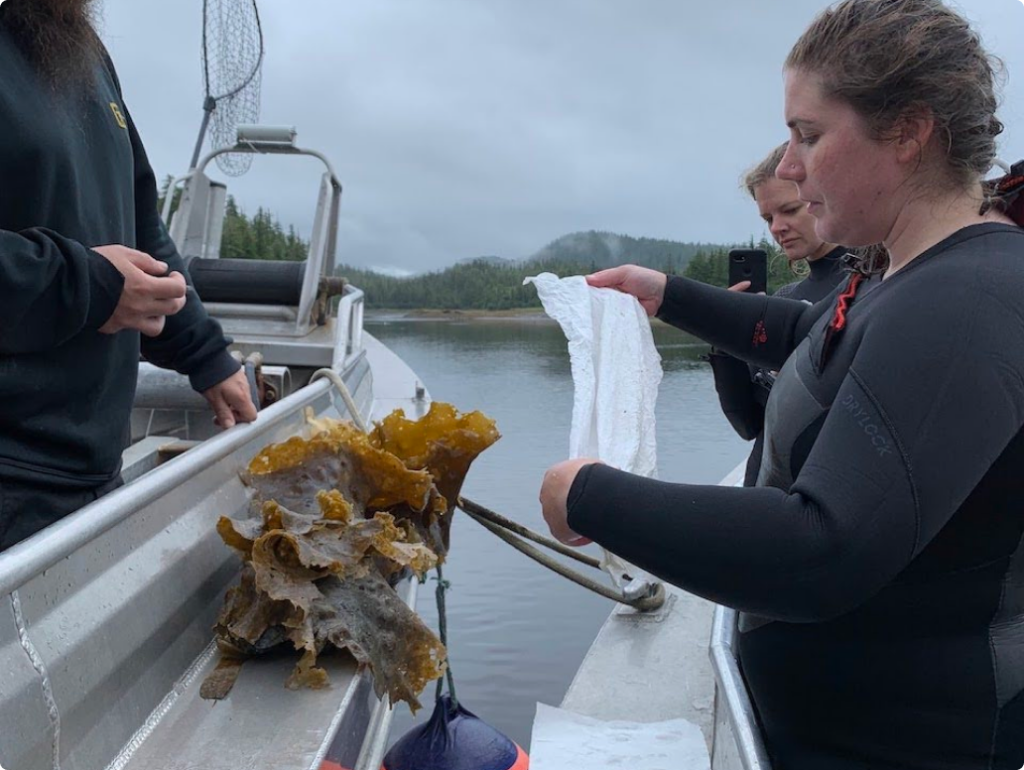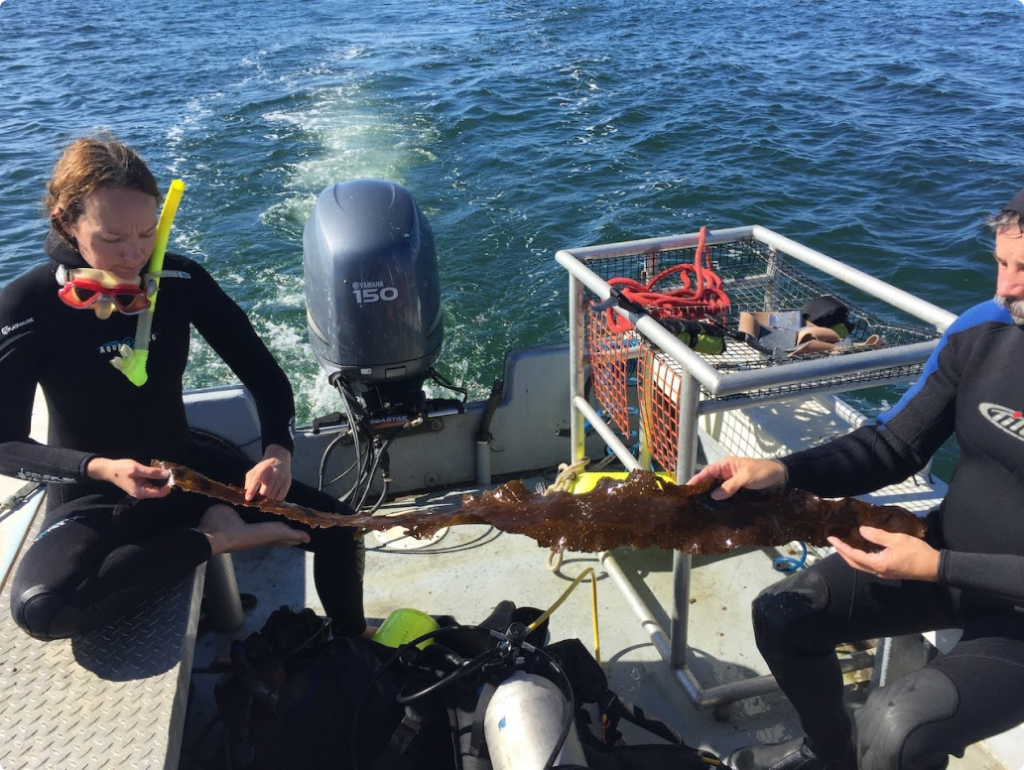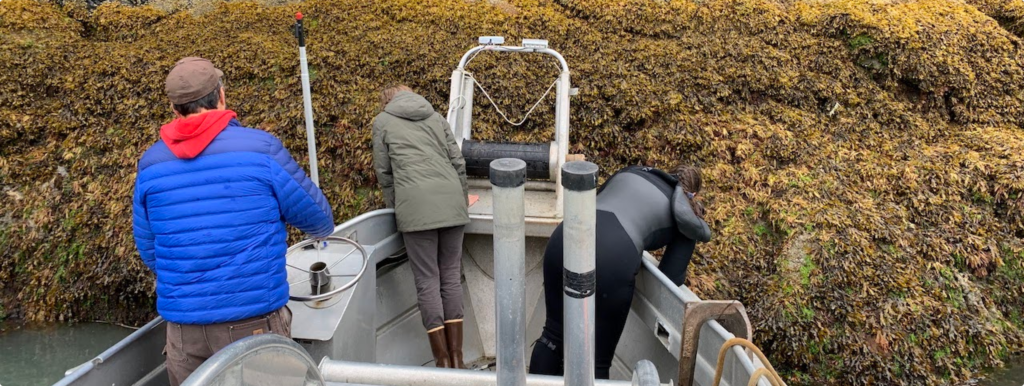Snorkeling
Back to: Sorus Collection
Once you’ve identified a healthy kelp bed to collect from, the next step is to solidify your collection method. There are three common methods for collecting sorus tissue. They all require you to get in the water!
Common ways for collecting sorus tissue:
-
-
Diving
-
On foot, wearing chest waders


In some areas, it’s possible to find sorus tissue at extreme minus tides. In this case, you can throw on some chest waders and walk into the water at peak low tide to collect your blades. In other areas, you’ll need a boat to access viable kelp beds, and you will need to either hire a diver or free dive to collect your kelp. With a wetsuit, fins, and a snorkel, it’s possible to free dive for kelp in most places. However, if you need to rent boats and/or hire divers for this process, it’s critical to make any arrangements over the summer, so you are not scrambling come fall.
If you are collecting by foot, wearing chest waders or a wetsuit, consider putting a pair of Grundéns bibs over your wetsuit; this way, the neoprene won’t get torn up on the rocks and barnacles as you’re rolling around in the subtidal zone searching for blades.
As you’re devising your plan for sorus collection, it’s important to also review your state’s regulations around sorus collection. These will vary widely state to state. In Maine, you’ll need to get a seaweed harvesting license from the Department of Marine Resources. In Alaska, you’ll need to apply for a stock acquisition permit from the Alaska Department of Fish and Game. At GreenWave, we source sorus tissue from each state where we supply seed to farms: Connecticut, Rhode Island, Massachusetts, and New York. Each of these states have different restrictions.

In some states, the responsibility for sorus tissue collection will fall directly onto the hatchery. In others, the farmer may be responsible for collecting the sorus tissue and shipping or delivering it to the hatchery. Check the guidelines outlined by your state’s agencies for collection regulations, required permits, and collection resources before collecting any sorus tissue. If you are receiving the sorus via shipment, make sure the sender is familiar with the Sorus Packaging and Shipping Protocols to ensure the sorus arrives to your facility in good shape.